Consumers will take some convincing, but there’s a good chance – and compelling reasons – why bakers will be adding bugs to their bakes in the future
Roberts Bakery made headlines across the globe late last year when it unveiled an insect-flour bread. Containing the equivalent of 336 crickets, it was the first such launch from a major UK bread brand, although not the first in Europe.
Late in 2017, Finnish business Fazer launched Fazer Sirkkaleipä (Cricket Bread). Containing flour produced from 70 crickets, it proved an instant hit with shoppers. But success did not last.
“It was very successful for about one year,” says Juhani Sibakov, R&D director at Fazer Bakery. “Despite the high interest among Finnish consumers, they didn’t buy it many times after the initial trial.”
So, what does the short life of Fazer Sirkkaleipä mean for wider development of baked goods containing insect flour? Insects have been heralded as a food source of the future – but are they a non-starter for bakers?
No, believes Sibakov, who feels Fazer was five to 10 years ahead of its time with the launch. “We see insects as an ingredient for the future, but consumers are not yet used to eating insects.”
He adds that there were no issues with the taste of the product, and that most comments from consumers were positive.
“In our opinion, it was more about the new ingredient which is not yet part of the Finnish food culture.”
Brits seem in no rush to make it part of their culture, either. When Roberts sent British Baker its Crunchy Cricket Loaf, it wasn’t easy to find members of staff willing to give it a try.
Yet, despite the ‘yuck factor’ (see above), it is likely insects will become a regular part of our diets in the future – as they already are in many parts of the world.
With an ever-increasing world population, current farming practices are simply unsustainable – alternative sources of protein are essential for the very survival of humans and the planet
Nick Cooper, founder, Crunchy Critters
According to The Netherlands’ Wageningen University, which specialises in food research, there are 2,100 species of insects that can be eaten by humans. And doing so could help feed the planet’s burgeoning population.
"With an ever-increasing world population, current farming practices are simply unsustainable – alternative sources of protein are essential for the very survival of humans and the planet,” says Nick Cooper, founder of UK-based edible insect supplier Crunchy Critters.
The environmental impact of meat production is helping drive development of insects as an alternative food source. Insects have a tiny ecological footprint compared to cows or pigs, explains Roberts Bakery innovation director Alison Ordonez, and emit 1g of greenhouse gases per 1kg of protein produced, compared to 2,850g for the same weight of beef. They can also be vertically farmed and require low input in terms of water and feed.
“This means they could provide a real solution to the predicted food shortage that’s expected to arise from the increasing world population,” she adds.
Insects also offer nutritional benefits that could have a role to play in the development of added-value baked goods (see below).

“The industry is still working to expand commercial production to try catching up with other ingredients that have well-established supply chains that have been developed for centuries in some cases.”
However, besides the ‘yuck’ factor, there are other reasons why it may take time for insect flours to become part of the UK baking mix. In particular, pricing and availability are two of these.
“Currently, insect flour is a premium ingredient,” says Charles Wilson at US-based supplier Cricket Flours. “The industry is still working to expand commercial production to try catching up with other ingredients that have well-established supply chains that have been developed for centuries in some cases.”
A kilo of insect flour will set a baker back about £60, according to Cooper.
“It’s hugely frustrating for us, given the enormous potential insect protein offers in terms of planet and human health,” he adds. “Yet we remain hopeful that increased interest in farming insects within Europe will lead to greater competition and drive down prices.”
Roberts feels the cost would be worth it for the health and sustainability benefits.
“We know consumers are happy to pay a premium for products with such environmental and health advantages,” adds Ordonez. “This can be factored into the overall cost of the product, as you would do with any bakery addition, such as seeds, grains or other protein sources.”
But it may not be easy to secure sufficient supply, should a business want to produce insect flour bread in bulk.
Lots of the manufacturers of insect ingredients are still reasonably small companies, so sourcing larger quantities might be challenging
Tiia Morsky, ingredients research team leader, Campden BRI
“Lots of the manufacturers of insect ingredients are still reasonably small companies, so sourcing larger quantities might be challenging,” suggests Tiia Morsky, ingredients research team leader at Campden BRI. “The consistency in quality may be an issue.”
She adds that the shelf-life of ingredients might be short.
“With insects containing high levels of linoleic and alpha-linolenic fatty acids, the risk of oxidative rancidity is increased. They should be processed and packaged in a way to reduce the onset of this, although this adds cost to the ingredient.”
Although there are also legal considerations (see above), once insect flour has been sourced, adding it to bread is a relatively straightforward recipe change. “There were surprisingly few technical challenges when developing our Crunchy Cricket Loaf,” says Roberts’ Ordonez.
“Our main issue was determining the addition rate. Crickets don’t contain gluten, so we easily lost strength in the dough at higher concentrations.”
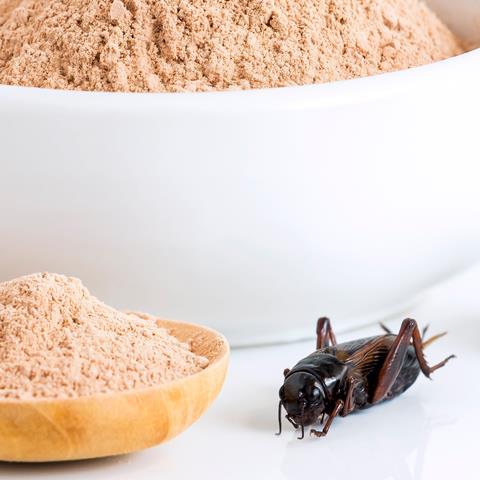
Dilution of the gluten network can lead to reduced bread volume and coarser crumb structure, while the dough might become stickier and more difficult to process.
Through experimentation, Roberts found it could include 13% cricket flour on flour weight without having to add gluten.
Worm flour may be less likely to impact gluten structure than cricket flour, suggests Cooper at Crunchy Critters. He adds that the diet on which the insects were reared will have some bearing on the levels to use in place of traditional flour.
Potentially more of an issue is the effect insect inclusion will have on the appearance, taste and smell of the bread.
Insect flours are typically light or dark brown in colour, which can cause a darker crumb and crust, points out Campden BRI.
“While this would be acceptable in wholemeal and malted grain, it would be less so with white bread,” says Morsky. “Additional protein from insect flour can also cause increased browning from the Maillard reaction and can give off-flavours and a dry texture at high levels.”
When it comes to any impact on bread flavour, there is a tipping point at which the flavour of the product has been either enhanced or completely destroyed, according to Cooper at Crunchy Critters.
’The quantity will differ from one insect flour to another – the insects’ diet again playing a role in outcome – but guideline parameters are an upper limit of 25% insect flour in place of traditional flour with a minimum as low as 5%’
“The quantity will differ from one insect flour to another – the insects’ diet again playing a role in outcome – but guideline parameters are an upper limit of 25% insect flour in place of traditional flour with a minimum as low as 5%,” he explains.
Cricket flour has a unique aroma, which can initially be off-putting
Alison Ordonez, innovation director, Roberts Bakery
Roberts experimented with various levels to get the best flavour for its cricket loaf.
“Cricket flour has a unique aroma, which can initially be off-putting,” says Ordonez. “However, once added to and baked with other recipe ingredients, it becomes a deliciously flavoured and textured loaf with real wholesome depth and nuttiness.”
Roberts again found 13% cricket flour was a suitable level as it was detectable, but did not produce a negative reaction with consumers – who often described the bread as flavoursome and “nutty”.
Ordonez adds that Roberts also experimented with bakery items that normally contain spices and flavour, and found cricket flour worked well in hot cross buns. And while some bakers may need convincing before they start adding bugs to their buns, Ordonez’s work on developing Crunchy Cricket Loaf has left her convinced about the prospects of insects in the baking industry.
“When you take into account facts and statistics, insect ingredients will play a big part in the future of bakery and food in general,” she says. “They simply can’t not.”

Overcoming the insect ‘yuck’ factor’
Let’s face facts: it is not going to be easy to convince a nation brought up on fish & chips and chicken tikka to eat bugs.
Yet, there are many compelling health and sustainability reasons for adding insects to a diet – and adding them to baked goods. But they’re insects. With legs and wings and squishy bits.
“The ‘yuck factor’ remains one of the biggest barriers to edible insects becoming the ‘norm’ here in the UK,” says Roberts Bakery innovation director Alison Ordonez. But attitudes are shifting, she believes.
“An increasing number of people – typically millennials – are showing an interest in these new food products.”
Citing a study by the Agricultural Biotechnology Council, Ordonez adds nearly a third of Brits believe insects will be part of mainstream human diets over the next 10 years.
“This is largely down to their excellent nutrient profile – they provide a great source of lean protein, vitamins and minerals. They’re also an environmentally sustainable protein source, which is hugely appealing to current attitudes and lifestyles.”
Including insects in a way that they don’t look like insects – such as a flour – is a useful step, suggests Alex Capel of insect farm and supplier Minifeasts.
“It is mainly the appearance that customers find difficult. It is helpful to emphasise and highlight the environmental and health benefits.”
But some people will never try bugs, states Charles Wilson of US supplier Cricket Flours.
We try crafting our products so you can try the recipes that use edible insects but still taste like your family’s favourite recipes.
Charles Wilson, Cricket Flours
“And that’s really OK,” he adds, “because there are a lot of people who will, and some people just need more time to come around to the idea like they have with shrimp, sushi, etc. We try crafting our products so you can try the recipes that use edible insects but still taste like your family’s favourite recipes.”
He adds many people have tried a cricket and been surprised that they taste like a pine nut.
Nick Cooper at Derby-based Crunchy Critters agrees that people are usually pleasantly surprised when they try insects. And educating children on the topic may encourage more people to do so.
“Eating behaviour is shaped largely during early childhood and, for us, eating insects is something seen mostly on TV shows such as I’m a Celebrity,” says Ordonez.
Cooper adds that children are more receptive to the taste and texture of insects because they don’t have preconceived ideas about them.
“And blending insects with other tasty and more recognisable food ingredients and flavours can increase the appeal,” he suggests.
The health benefits of bugs
Insects can offer many nutritional benefits that may help bakers develop added-value bakery products. Top of the list is protein, but insects also contain calcium, iron, vitamin B12 and vitamin C.

“According to one study, crickets appear to have antioxidant power five times higher than fresh orange juice,” says Roberts Bakery innovation director Alison Ordonez.
“They’re also said to be good for the gut, thanks to the high levels of chitinous fibre found in their exoskeleton,” she adds. “This is said to help to increase levels of a metabolic enzyme associated with gut health.”
Insects could be a good addition to gluten-free bread that tends to be low in proteins and fibres, according to Tiia Morsky, ingredients research team leader at Campden BRI. She adds that data suggests insects are a good source of amino acids, including essential amino acids, and also appear to be good sources of iron, zinc, manganese and selenium.
“Insects are also said to contain significant levels of fat,” says Morsky. “The breakdown of this fat varies depending on species and diet, but their oils are reported to be rich in polyunsaturated fatty acids and may contain linoleic and alpha-linolenic acids.”
Insect products and the law
Insects and insect-derived products are considered in the EU as ‘novel food’ – that is a “food that was not used for human consumption to a significant degree within the Union before 15 May 1997”.
This means that, in the UK, insects must currently be authorised by the European Commission to be lawfully marketed within the EU.
There is a transition period for the sale of insects that were previously lawfully on the market, but only if an application for approval as a novel or traditional food was lodged before 1 January 2019.
“This is a lengthy approval process,” explains Nick Cooper at Crunchy Critters.
“While, to date, no insect has received a final seal of approval, those bred within Europe (according to prescribed criteria) that were on the market prior to the latest regulations are still permitted for sale if a novel food application has been submitted, including details of intended use (such as within baked goods).”
He adds that the usual applications of food law – good hygiene practices, traceability, HACCP systems and labelling requirements – are required too.
Exploring the alternatives to wheat flour
While insects may be at the extreme end of ingredients set to play a role in bread, suppliers are predicting growing interest in other non-wheat flours.
EHL Ingredients has seen increased demand for alternative flours, such as gram, buckwheat, coconut, almond and rice, while flours derived from ancient grains such as quinoa, spelt, teff and millet are on the rise as bakers look for alternative, healthy ingredients.
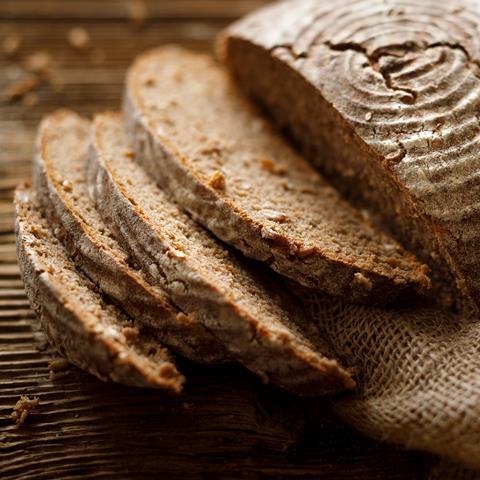
Vegetable flours such as pea, beetroot and lentil, also tap this trend, explains EHL new product development manager Kath Davies.
“These flours bring colour and enhanced visual and nutritional appeal to finished products. Vibrant red, pink and green wraps, pittas, and flatbreads will certainly appeal to today’s health-conscious consumers and the Instagram generation.”
She adds that other alternatives to wheat flour for savoury baking include chickpea, lentil, yellow pea and fava bean flour. For sweet bakery, Davies suggests coconut, almond or hazelnut flour as these add texture, nutritional benefits – and are free from gluten – and remain stable during baking.
“They are a little more delicate than wheat flour, so bakers may need to adjust formulations by adding binding agents or other ingredients,” she explains.
More challenging is using non-wheat flours to give a loaf of bread with the structure of one made with traditional bread flour, says Phil Bull, managing director of Eurostar Commodities.
“We’ve created a high-quality gluten-free flour that is suitable for lots of types of doughs. While you might see excellent, high-quality pizza bases, flatbreads and cakes, the traditional loaf is going to be the last product to move over.”
“The industry is still a little way off the perfect non-wheat loaf. We expect to see some serious development in bread in the next 18 months as consumer demand continues to rise.”
Wheat-free bread around the world
Many cultures use non-wheat flours in their bread – cornbread, for example, is popular in the Americas.
Millet is commonly used in Eastern European and Russian bread, points out Kath Davies, new product development manager at EHL Ingredients.
Many African breads are wheat-free too, such as injera bread, a sourdough flatbread traditionally made from indigenous teff flour.
“It has a porous, slightly spongy texture as it is used to scoop up sauces and stews,” says Davies. “It’s flat, and rolled up into tubes, and often used in place of a utensil or a plate. It’s similar to a crêpe in texture, is slightly sour and sweet. It’s best prepared by hand, but can be made in a blender too.
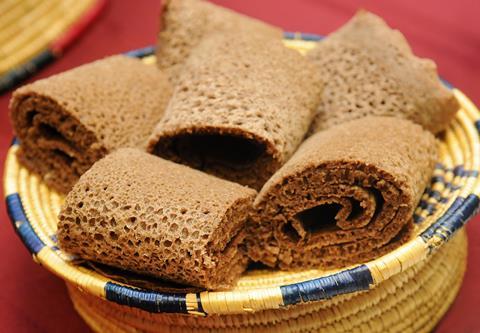






















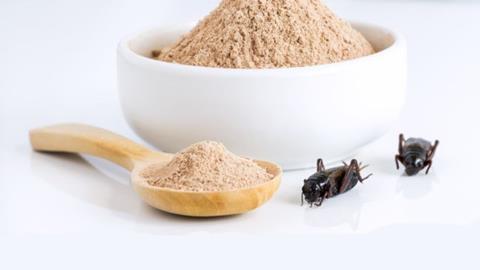
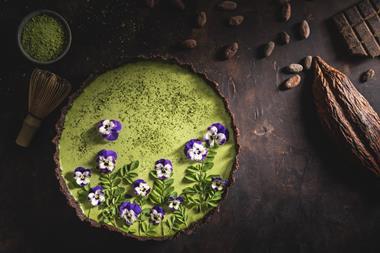
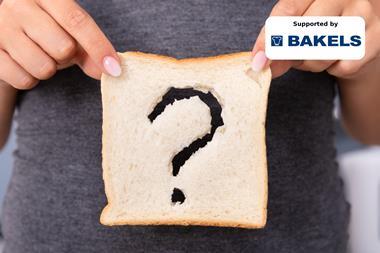

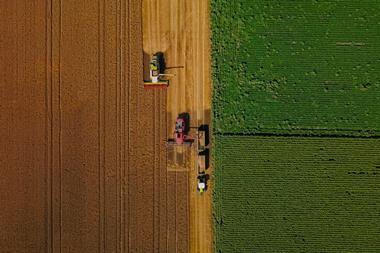

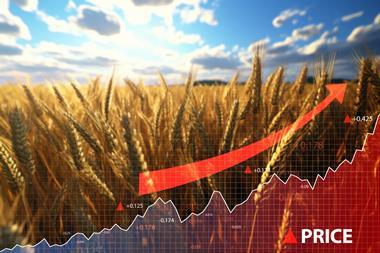

No comments yet